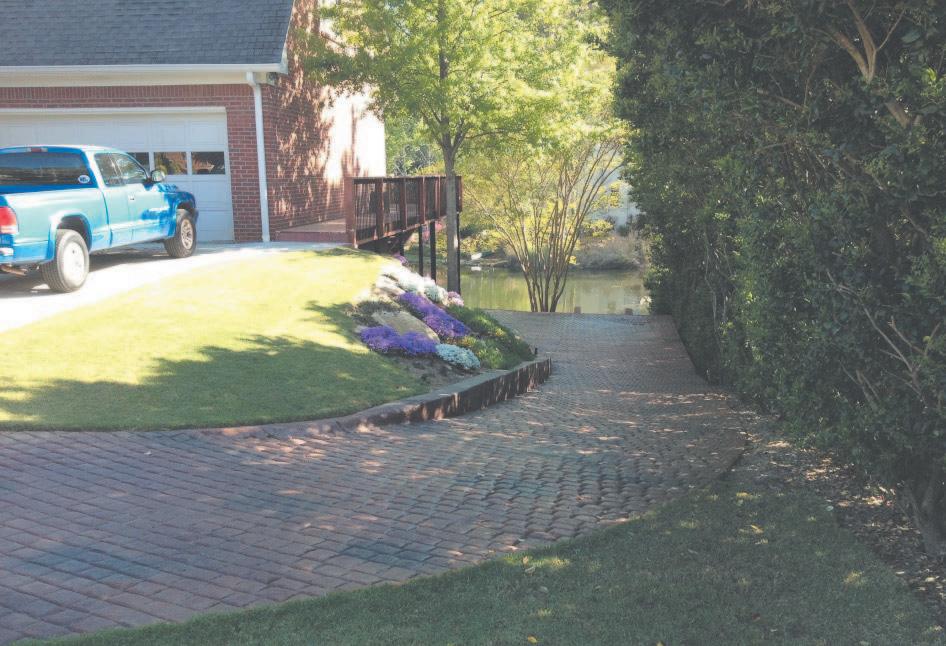
3 minute read
Lilies, time to feed veggies, plus rascally rabbits in the garden
Want some brilliant color in your garden or containers? Check out Asiatic lilies.
Although this year’s lily planting season has passed, you can mark your calendar to make an amazing impression in your landscape next spring. Asiatic lilies are easy to grow, put on an amazing and colorful show and come back year after year.
Last fall I ordered packages from Longfield Gardens online. The company is my go-to for all kinds of bulbs, including bulk purchases of daffodils, grape hyacinth, scilla and other early spring bloomers. Each fall I purchase at least a half-dozen amaryllis bulbs – Longfield’s are the largest and most reliable bloomers – to force indoors in water at the holidays.
Asiatic lilies, while similar in appearance to Oriental lilies like the popular florist Stargazer, are a better investment in my book. They come in a wide range of colors, from red and orange to yellow, pink and bi-colored.
Growing to a height of 18 to 24 inches, they’re great for cut flowers indoors. Asiatic lilies lack the strong fragrance of Oriental lilies, which can be bothersome to some people.
And like Orientals, you’ll need to pick off the pollen-laden stamens that can stain your hands and fabrics if you’re cutting them to bring inside.
Asiatic lilies tend to be more deer-resistant than Oriental lilies. They’ll come back year after year if you feed them with bloodmeal or another bulb fertilizer after they’ve bloomed, then keep the leaves on the plant until they turn brown.
There’s no need to dig the bulbs in the winter; just lightly mulch them in the fall.


Hungry veggies
If you’re growing food crops, such as tomatoes, beans, peppers, okra and eggplant, remember to feed them about every three or so weeks during the growing season. If you’re using containers or grow-bags, they will need to be fed more often, because the nutrients will be washed through the soil when you water. Containers, especially grow bags, need more water than raised beds. Just be careful to water at the roots and avoid getting the leaves wet, which can encourage diseases caused by fungi, bacteria and viruses.
This year I got carried away and now have 50 very healthy tomato plants in our raised beds and in grow-bags along the driveway. Heirlooms, like Cherokee purple and black krim, and a few new hybrids from the National Gardening Bureau, including zebra and California gold, Rick says we need to set up a tomato stand if they all get ripe at once!
Bunnies, rabbits and deer Rabbits are flourishing this season. From making appearances along the side of the road to popping up in yards and gardens, these cute little furry creatures can be charming. And, with the further development of our roadside forests into homes for people, the bunnies are losing their habitat.
It’s not unusual to see rabbits in the garden, because like Peter Cottontail says, the food is always greener at Mr. McGregor’s – or yours.
You can reduce the damage they make fairly easily, but con- sistency is the key. My favorite wildlife repellants are Liquid Fence and Hinder. I buy the concentrate in gallon jugs.
Both stink to high heavens, See Curb, page 54
Lakeside’s Recreation Guide
Corps Of Engineers
Provided by the U.S. Army Corps of Engineers

The Corps of Engineers welcomes you to beautiful Lake Sidney Lanier. Located just 35 miles northeast of Atlanta, the lake offers some of the finest camping opportunities in the South. The Corps operates 7 campgrounds at Lake Lanier. Camping enthusiasts may enjoy the luxuries of fully developed areas with water and electrical hookups or “rough it” at designated primitive areas. Most campgrounds have park attendants on duty to assist visitors. Camping in undesignated areas such as on the lake’s shoreline and islands is prohibited.
Day Use Parks
The Corps operates 35 day use parks at Lake Lanier. Facilities range from parks with boat ramps to those with designated swimming areas, picnic tables, shelters and playgrounds. All day use parks close daily at 10 p.m. Boat launching is allowed at all hours unless otherwise posted. Alcoholic beverages are prohibited in all parks.
Picnic Shelters
Picnic shelters are available at several Corps’ parks around the lake. They can be reserved for a fee. Call the Lake Lanier Management Office at 770-945-9531.
Day Use Fees
Day use fees are charged at some park areas which have boat ramps or beach areas. Fees (per day):
Boat launching $5
Vehicles $5
Commercial vehicle $20
Pedestrian/bicycle $2
Annual pass $40
STATE, COUNTY & CITY PARKS
Rules, Regulations and More
Guidelines are not intended as restraints to the enjoyment of park visitors, but as aids for orderly operation, visitor safety and for the protection of the environment and public property. Complete rules and regulations are posted at the entrances to all campgrounds and copies are available at entry stations. To view annual opening and closing dates and rates for campgrounds and picnic shelters, visit www.sam.usace.army.mil/Missions/Civil-Works/Recreation/Lake-Sidney-Lanier/Schedules.
n MORE INFO: Water release schedules - 770 945-1466
Lake information - 770 945-1467











